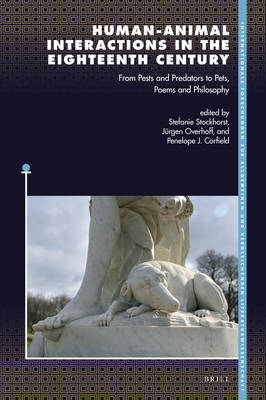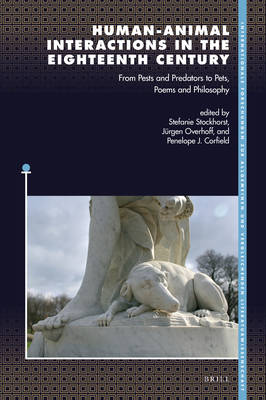
- Afhalen na 1 uur in een winkel met voorraad
- Gratis thuislevering in België vanaf € 30
- Ruim aanbod met 7 miljoen producten
- Afhalen na 1 uur in een winkel met voorraad
- Gratis thuislevering in België vanaf € 30
- Ruim aanbod met 7 miljoen producten
Zoeken
Human-Animal Interactions in the Eighteenth Century
From Pests and Predators to Pets, Poems and Philosophy
€ 137,45
+ 274 punten
Omschrijving
How did humans respond to the eighteenth-century discovery of countless new species of animals? This book explores the gamut of intense human-animal interactions: from love to cultural identifications, moral reflections, philosophical debates, classification systems, mechanical copies, insults and literary creativity.
Dogs, cats and horses, of course, play central roles. But this volume also features human reflections upon parrots, songbirds, monkeys, a rhino, an elephant, pigs, and geese - all the way through to the admired silkworms and the not-so-admired bookworms.
An exceptionally wide array of source materials are used in this volume's ten separate contributions, plus the editorial introduction, to demonstrate this diversity. As eighteenth-century humans came to realise that they too are animals, they had to recast their relationships with their fellow living-beings on Planet Earth. And these considerations remain very much live ones to this day.
Dogs, cats and horses, of course, play central roles. But this volume also features human reflections upon parrots, songbirds, monkeys, a rhino, an elephant, pigs, and geese - all the way through to the admired silkworms and the not-so-admired bookworms.
An exceptionally wide array of source materials are used in this volume's ten separate contributions, plus the editorial introduction, to demonstrate this diversity. As eighteenth-century humans came to realise that they too are animals, they had to recast their relationships with their fellow living-beings on Planet Earth. And these considerations remain very much live ones to this day.
Specificaties
Betrokkenen
- Uitgeverij:
Inhoud
- Aantal bladzijden:
- 212
- Taal:
- Engels
- Reeks:
- Reeksnummer:
- nr. 207
Eigenschappen
- Productcode (EAN):
- 9789004448728
- Verschijningsdatum:
- 16/12/2021
- Uitvoering:
- Hardcover
- Formaat:
- Genaaid
- Afmetingen:
- 155 mm x 235 mm
- Gewicht:
- 477 g

Alleen bij Standaard Boekhandel
+ 274 punten op je klantenkaart van Standaard Boekhandel
Beoordelingen
We publiceren alleen reviews die voldoen aan de voorwaarden voor reviews. Bekijk onze voorwaarden voor reviews.










